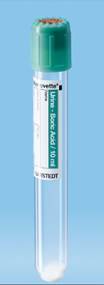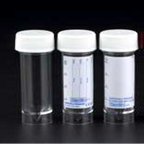
In the female, introital cleansing is the
most important determinant of a 'clean' specimen. Collection can usually be
deferred until immediately after the patient has showered or bathed. Among
bed-bound patients the risk of contamination is considerably greater so all the
more attention should be paid to the simple expediency of perineal and
introital cleansing; the mid-stream aspect then becomes much less important.
Only soap and water, never disinfectants, should be used for cleansing.
'Dip-stick' tests for glucose, protein, blood, etc. are not routinely performed
on urine samples submitted for microbiological tests because such screening has
usually already been done on the ward, or in the clinic or surgery. Such tests
will be undertaken if the request form clearly indicates that this is required.
The presence of boric acid helps to maintain the microbiological quality of the specimen if not
analysed within 4 hours of collection. Boric acid preservative holds the bacterial population steady for 48-96
hours and other cellular components remain intact.
NB. If a freshly passed urine is found outside the laboratory to have an
alkaline pH a note of this should be recorded. An alkaline reaction is a sine
qua non for Proteus infections, whereas contamination with this organism during
collection will not alter the normally acidic pH of the urine as long as this
is tested immediately.
NB. EMUs (Early Morning Urine for TB studies) is discussed under the specific heading in the index.
Catheter samples (CSU)
Closed drainage systems should not be 'broken' for the purpose of obtaining a
sample, which should be aspirated using a sterile syringe and needle inserted
aseptically into the sampling port on the catheter tubing. Urine from drainage
bags is not representative of the urine draining from the bladder. Microscopy
is not routinely performed on CSUs unless there is a specific request to do so
: the presence or absence of pyuria is of no predictive value for infection
when a catheter is in situ.
NB. It is not worth sending the tips of bladder catheters for culture
after removal. Submission of an MSU 48-72 hours later is far more informative.
Ileal conduit samples and nephrostomy tube samples
These will have a microscopy performed if the nature of the sample is clearly
marked on the request form (rather than simply suggesting that they are 'CSUs'
without further qualification). In both cases urine from drainage bags is
liable to be misleading in terms of culture results.
